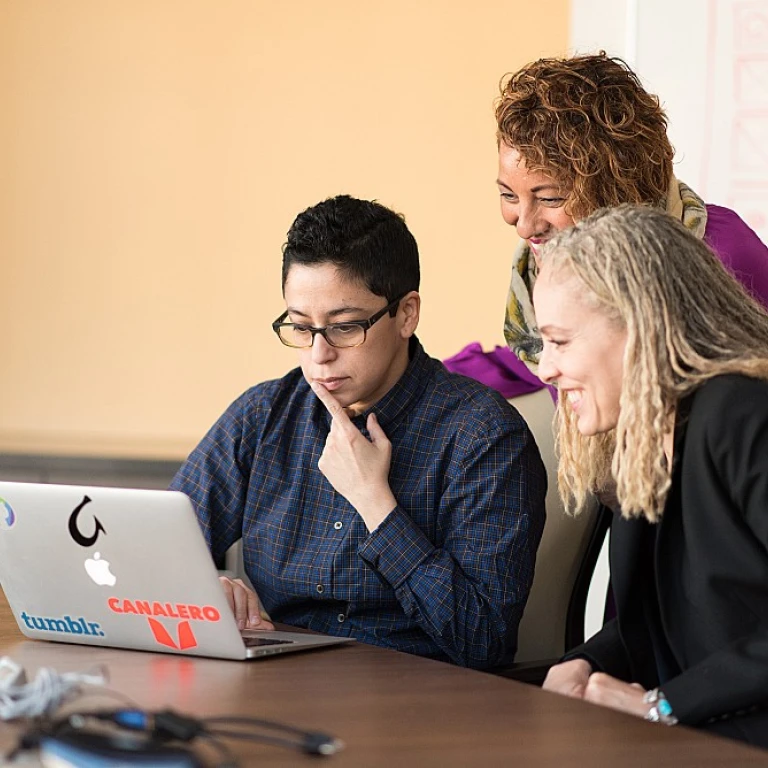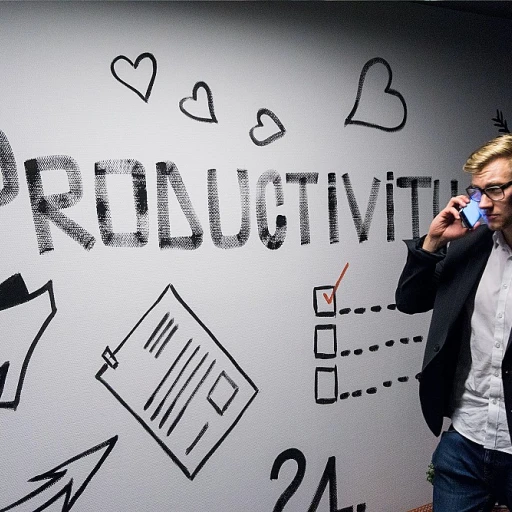Understanding the Mentor-Mentee Dynamic
The Mentor and Mentee Dance
In the world of professional mentoring, the mentor and mentee dynamic is a bit like a dance. It's about interaction, connection, and understanding the give-and-take nature of the relationship. A successful mentoring process is built on mutual respect and a shared commitment to growth. Mentorship isn’t limited to just imparting knowledge; it's about shaping a relationship where both the mentor and mentee can grow and develop. Mentoring carries a unique set of challenges. One common mentoring challenge is time commitment. As professional lives become busier, finding the right time for mentorship can be tricky. Mentoring programs often struggle with mentees and mentors who have packed schedules. Yet, both parties must commit time to make the mentor mentee relationship thrive. There's also the human side—personalities, ambitions, and expectations. Every mentoring program must tackle these head-on. Mentors often face the challenge of balancing their guidance with allowing the mentee to explore independently, another common mentoring challenge. This balance is key to helping mentees gain confidence and learn valuable problem-solving skills.A Common Language
Communication is king. In any mentoring relationship, it's essential for the mentor and mentee to communicate effectively. However, overcoming communication barriers can be a significant challenge in mentoring relationships. Differences in communication styles or a lack of constructive feedback can create gaps that are tough to bridge. Establishing a common language, rooted in openness and honesty, can bridge these gaps. Simple practices like regular feedback, active listening, and clarity in communication goals can transform how mentors and mentees interact. Are you curious to explore various styles of mentorship that can accommodate these dynamics? Check out this insightful article on exploring varieties of professional mentoring. In the world of mentoring, every move counts, and every step can lead to professional development and success if performed with dedication.Balancing Guidance and Autonomy
Finding the Sweet Spot Between Guidance and Independence
A professional mentor can truly be a guiding light on the sometimes confusing path of career development. It's like having a supportive friend who helps you see things you might not have considered. But every relationship has its own rhythm, and the mentor-mentee duet is no exception. Striking the right balance between offering guidance and allowing for autonomy is a challenge many mentors face. Too much direction can feel like hand-holding, too little can leave a mentee adrift. A mentor doesn't want to micromanage, nor does a mentee want to feel abandoned.- Listen and Adapt: Every mentee is different. Some prefer a hands-on approach, while others thrive under a light touch. It's crucial for mentors to gauge this early on and adjust their approach accordingly.
- Empower Decision-Making: Encouraging mentees to make their own decisions fosters more independence. Offering advice on options without dictating choices helps cultivate this skill.
- Encourage Constructive Feedback: Create an environment where open communication is valued. Constructive feedback can be a powerful tool in professional development.
Communication: Breaking Over Barriers
Communication is the glue that holds any mentoring program together. Yet, it's easy for wires to get crossed. One of the biggest hurdles in mentoring relationships is overcoming communication barriers, whether they're generational, cultural, or even related to industry jargon.- Set Clear Channels and Expectations: From the get-go, mentors and mentees need to agree on how often and through what means they will communicate. This reduces misunderstandings and keeps things running smoothly.
- Mind the Language and Tone: Be aware of different backgrounds. A mentor might use clear and approachable language, and both parties should avoid acronyms that the other might not understand.
- Utilize Mentoring Software: Technology can assist in organizing meetings, tracking progress, and keeping communication streamlined. While some prefer face-to-face mentoring, platforms might be an unexpected boon.
Recognizing and Adapting to Cultural and Age Differences
Mentoring is like a dance and sometimes your partner might have learned different steps. Often mentors and mentees come from diverse cultural backgrounds or different generations. Recognizing these differences and respecting them is key.- Identify Respective Values and Norms: It helps to have discussions about both parties' cultural and generational experiences. These insights inform the context of the mentoring process.
- Bridge the Gap with Empathy: Approach each situation with an open mind and a willingness to understand where your counterpart is coming from.
- Adapt for Diversity: Tailoring approaches depending on the unique mix of the mentoring team is crucial.
Overcoming Communication Barriers
Tearing Down Communication Walls
At the heart of any successful mentoring process is strong communication. However, it's no secret that this can present one of the common mentoring challenges—especially when mentors and mentees struggle to find the right balance. Sometimes, barriers crop up due to a lack of experience or even different communication styles. To tackle these challenges, mentors and mentees need to foster an open and honest dialogue. Embracing a culture where asking questions and giving constructive feedback is encouraged can transform the mentoring relationship. Don’t shy away from discussing feelings or concerns either—being transparent is often the best way to move past roadblocks.Reading Between the Lines
People come from all walks of life, and what works communication-wise for one person might completely miss the mark for another. If the words aren't cutting through, it might be time to turn to non-verbal cues. Body language, tone, and even facial expressions can relay as much information as spoken words. Being observant—and paying attention to these subtle signals—enhances understanding and avoids any miscommunication. On this note, it’s incredibly powerful when a mentor recognizes the importance of active listening. It’s more than just hearing words; it’s about really understanding the intended meaning. This goes a long way in nurturing trust and supporting the mentoring relationship as it evolves over time.The Tech Advantage
In an increasingly digital world, utilizing communication tools and mentoring software can be a game-changer for any mentorship program. Tools like video calls, chat platforms, and shared spaces streamline communication and make it easier to bridge gaps—especially when geography separates mentors and mentees. Integrating these tech solutions into your routine can make the difference, offering flexibility and ease to professional development discussions across distances. It's about making those conversations happen, regardless of the hurdles posed by time and location. With communication bolstered by technology, the mentoring process has room to flourish, unchecked by common challenges. This evolution doesn't just support mentees; it provides a holistic growth avenue for mentors as well.Cultural and Generational Differences
Bridging the Gap Between Cultures and Generations
In any mentoring relationship, understanding and embracing cultural and generational differences can be both a challenge and an opportunity. The beauty of mentoring lies in its diversity, but this diversity can also lead to misunderstandings if not handled with care. Let's explore how mentors and mentees can navigate these waters.
One common challenge in mentoring programs is the clash of cultural norms and values. A mentor from one background might have a different approach to communication and feedback than a mentee from another. For example, some cultures value direct and straightforward feedback, while others might find it harsh and prefer a more indirect approach. Recognizing these differences is the first step in building a successful mentoring program.
Generational Differences: Bridging the Age Gap
Generational differences can also pose challenges in mentoring relationships. A mentor who has been in the professional world for decades might have different expectations and work habits than a younger mentee. The key is to find common ground and respect each other's perspectives. Mentors can learn to appreciate the fresh ideas and technological savvy that younger mentees bring, while mentees can benefit from the seasoned wisdom and experience of their mentors.
In a successful mentoring process, both parties should be open to learning from each other. This mutual exchange fosters professional development and can lead to innovative solutions that benefit both the mentor and mentee.
Building a Supportive Environment
Creating an environment where cultural and generational differences are acknowledged and respected is crucial. Mentoring programs should provide training and resources to help mentors and mentees understand and appreciate these differences. Encouraging open communication and providing constructive feedback can help bridge gaps and strengthen the mentoring relationship.
For those interested in learning more about how to balance guidance and autonomy in mentoring, check out this insightful resource on cross-functional mentoring programs.
Ultimately, embracing cultural and generational diversity in mentoring relationships can lead to a richer and more rewarding experience for both mentors and mentees. It's about creating a space where everyone feels valued and understood, paving the way for personal and professional growth.
Setting Realistic Expectations
Setting Clear Expectations for a Successful Mentoring Relationship
When diving into the mentoring process, it's easy to get lost without a solid foundation of expectations. For mentorship to truly help professional development, both mentors and mentees need to be on the same page, charting paths that work for everyone involved. Clarity here isn't just a nice-to-have; it's essential for keeping the relationship on track and ensuring both parties reap the benefits. Consider the following tips when setting expectations:- Define Goals Together: Early conversations should focus on setting clear, achievable goals for the mentor-mentee relationship. These might range from boosting specific skills to navigating career development phases. This shared vision fosters accountability and motivation.
- Agree on Communication: It's crucial to establish how often and through which channels you will communicate. Email, phone calls, video chats, or even in-person meetings, if possible, are all viable options. Ensuring a regular connection avoids miscommunication and keeps momentum.
- Respect Boundaries: While mentoring involves guidance, it's important to avoid crossing lines into personal spaces. Both mentors and mentees ought to recognize professional limits and respect each other's time and commitments.
- Address Conflicting Schedules: Life can be hectic, but scheduling regular interactions is vital for nurturing the mentoring relationship. Planning ahead can prevent lack commitment from derailing progress.










